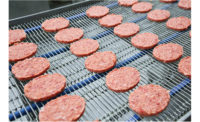The global food processing equipment market is likely to witness high growth, as key players are working on product enhancements and employing advanced technologies.
In fact, the global food processing equipment market is projected to exhibit a growth rate of 6.7% over the forecast tenure from 2017-2022. By the end of 2022, the market is anticipated to touch $70.51 billion, according to a report released by Transparency Market Research, Albany, N.Y.
Players are focusing on research and development activities to come up with innovative design along with enhanced capacities. Minimizing cost of maintenance, safety and energy efficiency are some of the key factors driving enhanced technologies.
Application of food processing equipment is high in the semi-automatic segment, and is projected that during the forecast tenure, the valuation will cross more than $42 billion in terms of revenue. In the meantime, demand for automatic food processing equipment is also expected to rise at a healthy rate. Geographically, Asia Pacific excluding Japan is projected to lead the market. India, Indonesia and China are the major countries where the demand for processed food has increased significantly, which further augmented demand for food processing equipment in Asia Pacific.
Globally, there is a change in consumers’ lifestyles, which has led the growth in different sectors and industries. The inclusion of technology at such a high rate has also changed ways organization worked. All these factors benefited the growth in the global food processing equipment market. Today’s consumers prefer processed food that can be easily carried and consumed. Rapid globalization, the growing income of people in emerging economies and the rising population also triggered the growth in this market.
Furthermore, governments in different regions are also encouraging the use of food processing equipment to enhance research and development capabilities. Increasing health consciousness and a dietary shift in both developed and developing region continue to boost demand in this market.
Despite the growing demand for food processing equipment form different regions, there are still challenges faced that might hinder the growth of this market. Limited knowledge about appropriate hygiene design and lack of standardization are key challenges faced in the global food processing equipment market. In addition, food processing equipment also might refrain end-users to use this equipment. However, changing lifestyle, growing demand for processed and ready-to-eat food and the growing use of advanced technology can minimize the effect of these restraints.


